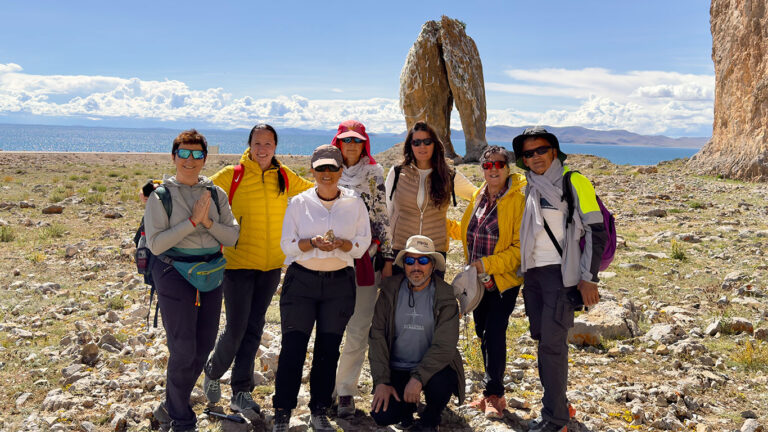Latest Information on Tibet Travel Permits

To preserve Tibet’s unique cultural heritage, safeguard its ecological environment, and accommodate regional logistical considerations, the Chinese government requires foreign nationals (non-Chinese passport holders) to obtain a Tibet Travel Permit before visiting the Tibet Autonomous Region (TAR). This regulation applies to all foreign tourists and underscores the importance of sustainable tourism and cultural preservation in the region.
Managing visitor impact on fragile ecosystems.
Aligning with Tibet’s infrastructure capacity, including transportation and hospitality services.
Mandatory Group Tours: Independent travel is prohibited. All foreign visitors must join organized group tours with licensed Tibetan travel agencies.
Valid Chinese Visa: A Chinese visa is required before applying for the Tibet Travel Permit.
Restricted Areas: Permits specify approved entry points and destinations (e.g., Mt. Kailash requires additional documentation).
Processing Time: Permits typically take 7–14 days to process. For visits to restricted areas like Mount Kailash, allow 14–20 days. Delays may occur during Chinese national holidays.
Permit Details: The two-page document includes entry points, itinerary details, and group passport information.
Book Early: Start the process 6–8 weeks before departure to account for processing and unexpected delays.
Stay Flexible: Itinerary changes post-permit approval may require reapplication.
Trust Your Agency: Reputable agencies streamline logistics, including permits, accommodations, and guided tours.
Ready to Explore Tibet?
By securing your Tibet Travel Permit through an authorized agency, you contribute to responsible tourism while unlocking access to one of the world’s most awe-inspiring destinations. Contact us today to begin your journey—we’ll handle the paperwork so you can focus on the adventure!
Contacting a Tibet-based travel agency: The most formal way to receive the Tibet travel Permit is to contact a Tibet-based travel agency, that specializes in organizing trips in Tibet. They will apply your Tibet Visa application from the Tibet Tourism Bureau.

Plan Tibet Tour itinerary: Once you decide to visit Tibet, you will need to speak with the travel agency about your detailed tour itinerary in Tibet. Which will include all the places that you plan to visit, the dates of your travel, and accommodations.
Get receive a China visa: You will need a valid China Visa before applying for the Tibet Travel Permit. You can apply for a China Visa from the China Embassy or China Consulate based in your home country.
If you plan to come from Nepal, then you’re not allowed to apply for a China visa from your home country. Instead, you’ll have to apply for the China Group Visa also known as the Tibet Group Visa. This visa will be provided from China Embassy in Kathmandu, Nepal for foreigners who intend to enter Tibet from Nepal side.
Tibet travel permit: Your travel agency in Tibet will connect the soft copy of your China Visa and Passport and submit them for applying for the Tibet Travel permit to the Tibet Tourism Bureau. Normally, the procedure will take around one to two weeks depending on your travel destinations in Tibet. If you are planning to visit Mt. Kailash, then the process may take around 20 days or more. The Tibet Tourism Bureau will be closed during the official holidays; therefore, it is best to apply before a month’s tour departure date.
Once your Tibet Travel Permit is approved by the Tibet Tourism Bureau, your travel agency will send the original hard copy of the permit to your hand. You will have to present your Tibet Travel Permit along with your passport while you’re boarding flights or entering Tibet from Tibet-Nepal Border.
What Is Tibet Travel Permit?
The corrected message is:
Tibet Travel Permit is the most indispensable travel document to enter the Tibet Autonomous Region (TAR). Without it, foreigners will not be allowed to enter the region. Therefore, every foreign traveler must obtain this travel document from a Tibet-based travel agency.
Who Requires Tibet Travel Permit?
How To Apply Tibet Travel Permit?
What Documents needs to summit for applying the Tibet Travel Permit?
Once your trip is confirmed with us, the Tibet Travel Permit application will be sent to the Tibet Tourism Bureau.
How long the Tibet Permit process will take?
The duration of the process will depend on your trip schedule; for example, if you plan to visit Mt. Kailash or the western region of Tibet, the process can take between 15 and 20 days.
If you want to go to Mount Everest Base Camp(EBC), it can take you 8 to 14 days.
It will take roughly 7 days if you are having a brief tour in the Lhasa area for 4–6 days.
The Tibet Tourism Bureau will be closed on the days of China’s national holidays, making it impossible to process the permission.
Where you can get your Tibet Permit?
We’ll send the hard copy of the document through Fastest mail Services to your temporary address in China.
We will send you the soft copy of the Tibet Permit through email. Then, you will have to make 3 copies of the permits to show at the Train stations.